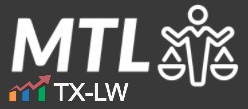You cooperate with an IRS audit. You provide detailed financial records. You answer questions about your business.
Years later, you discover the IRS is using your information in cases against other taxpayers. The IRS is sharing details about your business location, your EIN, even the fact you’re under investigation for a tax promoter penalty.
Is this legal? Is the information confidential? If it is publicly disclosed, what protections do you have?
The recent case of Crow v. United States, No. 1:23-cv-00046 (D. Idaho Aug. 5, 2025) gets into this. It involves a tax advisor who provided information the IRS only to find that it was used and publicly disclosed in other proceedings.
Contents
Facts & Procedural History
The taxpayer was an employee and a minority shareholder, and director of a corporation that worked with clients who were buying and selling assets.
In November 2015, the IRS started a promoter examination. This wasn’t a regular income tax audit. The IRS was investigating whether the taxpayer promoted abusive tax shelters under Section 6700.
The taxpayer cooperated with the IRS. He met with IRS agents. He provided detailed information about transactions where the corporation acted as a counterparty. He shared personal details, including that the corporation employed him and that he occasionally worked for the corporation remotely from his personal residence.
According to the IRS’s later disclosures, the taxpayer began promoting “Collateralized Installment sales (C453)” in 2005 and later promoted “Monetized Installment sales (M453).”
Fast forward to October 2022. The IRS was litigating a court case in tax court, Harty v. Commissioner, No. 23354-21. This case involved a different taxpayer who was challenging the IRS’s tax treatment of an installment sale to which the corporation was a counterparty.
On October 20, 2022, the IRS moved to amend its answer in the Harty case. The amendment included:
- The corporation’s employee’s identity as President and Director of the corporation
- The corporation’s Employer Identification Number (EIN)
- That the corporation was “located in Crow’s personal residence in Boise, Idaho”
- That the installment sale was subject to an “ongoing promoter investigation”
The taxpayer found out about this public disclosure and sued the government in January 2023. He claimed the IRS violated Section 6103 by illegally disclosing his confidential return information. He sought damages under Section 7431, including punitive damages of $500,000.
During discovery, he found more public disclosures. In Stillahn v. Commissioner, Tax Court No. 13942-20, the IRS had shared a draft pleading containing “many of the same disclosures” as in Harty. In Sand v. Commissioner, Tax Court No. 10546-22, the IRS disclosed the corporation’s EIN and that the corporation was located in Crow’s personal residence. Both cases involved taxpayers who were counterparties with the corporation in installment sale transactions.
Section 6103 – The General Rule of Confidentiality
Section 6103(a) establishes the foundation of taxpayer privacy. It says that:
“Returns and return information shall be confidential, and except as authorized by this title… no officer or employee of the United States… shall disclose any return or return information obtained by him in any manner in connection with his service as such an officer or an employee or otherwise or under the provisions of this section.”
The key phrase is “except as authorized by this title.” This means the prohibition is absolute unless another provision specifically allows disclosure.
The statute defines “return information” in Section 6103(b)(2) to include:
“(A) a taxpayer’s identity, the nature, source, or amount of his income, payments, receipts, deductions, exemptions, credits, assets, liabilities, net worth, tax liability, tax withheld, deficiencies, overassessments, or tax payments, whether the taxpayer’s return was, is being, or will be examined or subject to other investigation or processing, or any other data, received by, recorded by, furnished to, or collected by the Secretary with respect to a return or with respect to the determination of the existence, or possible existence, of liability (or the amount thereof) of any person under this title for any tax, penalty, interest, fine, forfeiture, or other imposition, or offense.”
That definition is intentionally broad. The phrase “any other data” sweeps in virtually everything the IRS learns during an examination.
The court in in this case had to determine whether specific items qualified as protected return information. The corporation’s EIN clearly fell within the definition as it relates to the taxpayer’s identity. Information about the taxpayer’s work habits and the corporation’s location at his residence qualified as “other data” collected by the IRS during the promoter examination.
The Transactional Relationship Exception
Not all information is protected from disclosure. Section 6103(h)(4) creates exceptions for “judicial and administrative tax proceedings.” The relevant provision is Section 6103(h)(4)(C):
“A return or return information may be disclosed in a Federal or State judicial or administrative proceeding pertaining to tax administration, but only if… such return or return information directly relates to a transactional relationship between a person who is a party to the proceeding and the taxpayer which directly affects the resolution of an issue in the proceeding.”
Breaking this down, three elements must exist:
- A transactional relationship – There must be an actual transaction between the party in the proceeding and the taxpayer whose information is being disclosed.
- Direct relation – The return information must “directly relate” to that transactional relationship. Peripheral or tangential information doesn’t qualify.
- Direct effect on resolution – The information must “directly affect the resolution of an issue in the proceeding.” It’s not enough that the information provides context or background.
The IRS argued this exception justified its disclosures in this case. The corporation had served as the counterparty in installment sale transactions with the taxpayers in Harty, Stillahn, and Sand. The IRS contended that information about the corporation and its principal was necessary to determine the proper tax treatment of these transactions.
Private Cause of Action & the Good Faith Defense
Section 7431(a) creates a private right of action for unauthorized disclosures. It allows taxpayers to directly sue the government for these disclusres. Section 7431(a) says that:
“If any officer or employee of the United States knowingly, or by reason of negligence, inspects or discloses any return or return information with respect to a taxpayer in violation of any provision of section 6103, such taxpayer may bring a civil action for damages against the United States in a district court of the United States.”
But Section 7431(b) includes a limitation for good faith disclosures:
“No liability shall arise under this section with respect to any inspection or disclosure which results from a good faith, but erroneous, interpretation of section 6103.”
The statute doesn’t define “good faith.” Courts have interpreted it to mean a reasonable, though ultimately incorrect, interpretation of the law.
The Ninth Circuit addressed this in Ingham v. United States, 167 F.3d 1240 (9th Cir. 1999). The court held that “the good-faith exception protects defendant against liability” and affirmed summary judgment for the government without even deciding whether the disclosures satisfied Section 6103(h)(4).
This creates a two-layer defense for the IRS. First, it can argue the disclosure was authorized. Second, even if unauthorized, it can claim good faith. That is what it did in this case.
The Court’s Analysis in Crow
The district court started with the information itself. Specifically, the court examined what information had already been publicly disclosed.
The court found that information disclosed in prior judicial proceedings—S. Crow Collateral Corp. v. United States, United States v. Vaught, and Crow v. IRS—lost its protected status. The court concluded that once information enters the public record through court proceedings, Section 6103 no longer protects it.
The then court considered what information remained protected. It said that three categories of information survived:
- The corporation’s EIN
- The taxpayer’s work habits (working from home)
- The corporiation’s location at the taxpayer’s personal residence
According to the court, these items had never been disclosed in prior proceedings and remained protected return information.
The court then addressed the taxpayer’s request for injunctive relief. The taxpayer wanted the court to prohibit future disclosures and prevent IRS employees from accessing his return information. The court denied this request, citing sovereign immunity principles. The court noted that any waiver of sovereign immunity “must be strictly construed in favor of the sovereign and may not be enlarged beyond the waiver its language expressly requires.” The court found no statutory authorization for the requested injunction. It specifically noted that granting such relief would “effectively regulate the IRS’s adjudication of ongoing tax proceedings, which relates to the collection or assessment of income tax.”
The court allowed the case to going forward toward trial on the limited issues of whether disclosing the EIN, work habits, and business location violated Section 6103. The taxpayer still has to prove the IRS violated Section 6103, overcome the transactional relationship exception, and defeat the good faith defense before he can even get to damages discovery. And without actual damages, he cannot get punitive damages. The court’s decision to bifurcate the case means the taxpayer has to first prove liability before proceeding to damages discovery. This creates yet another procedural hurdle in obtaining meaningful relief.
The Takeaway
This case shows that Section 6103’s broad protection has significant holes. When the IRS examines related transactions involving multiple taxpayers, the taxpayer’s information from one audit or examination may end up in being disclosed in other proceedings. The transactional relationship exception gives the IRS considerable discretion, the good faith defense protects even erroneous disclosures, and sovereign immunity bars injunctive relief. Combined with the difficulty of proving actual damages, these limitations mean that once the IRS has your information, controlling its use—and getting meaningful relief for improper disclosure—is nearly impossible. Thus, the takeaway is that one should consider whether they really want to coorerate with the IRS on audit, as the IRS has little to no guardrails against disclosure of private information.
Watch Our Free On-Demand Webinar
In 40 minutes, we'll teach you how to survive an IRS audit.
We'll explain how the IRS conducts audits and how to manage and close the audit.



